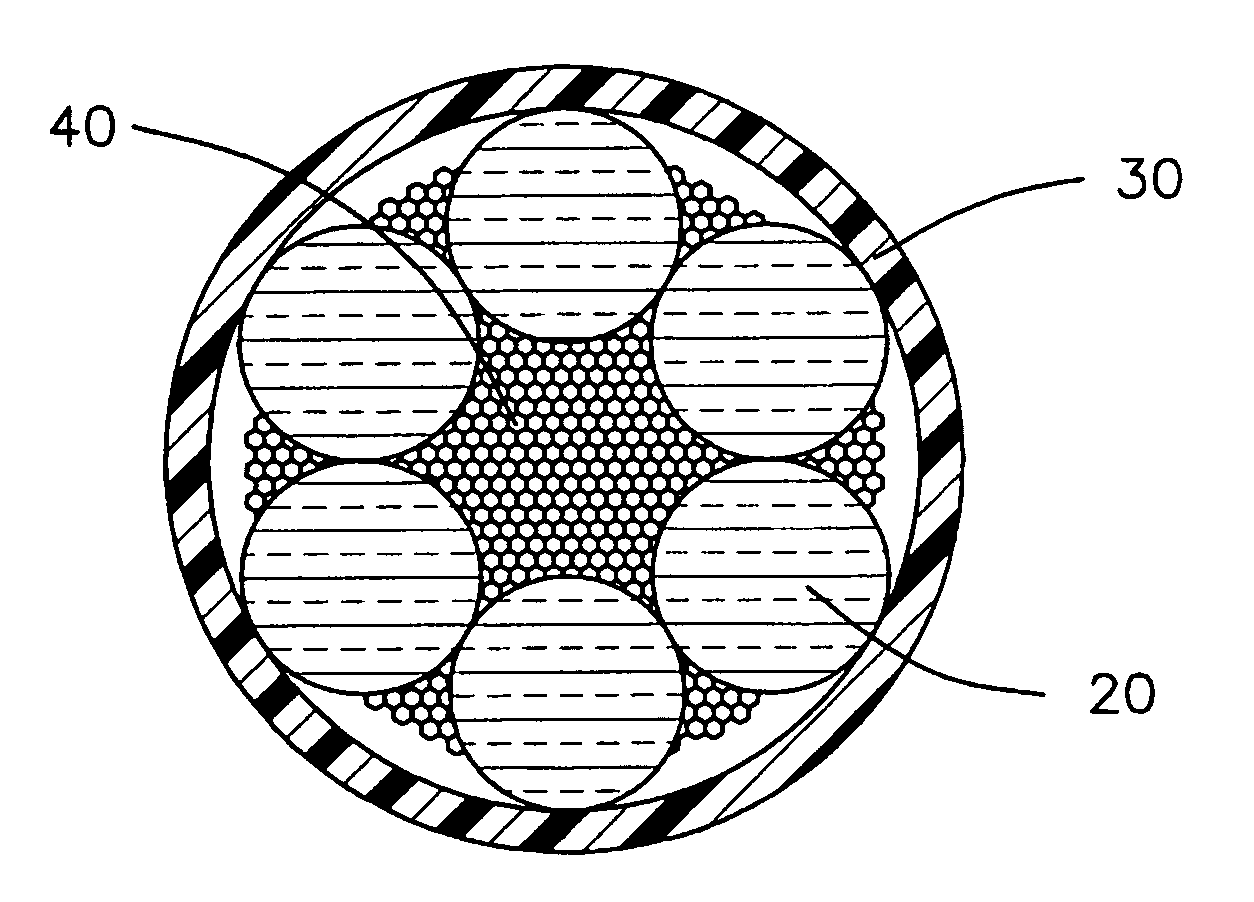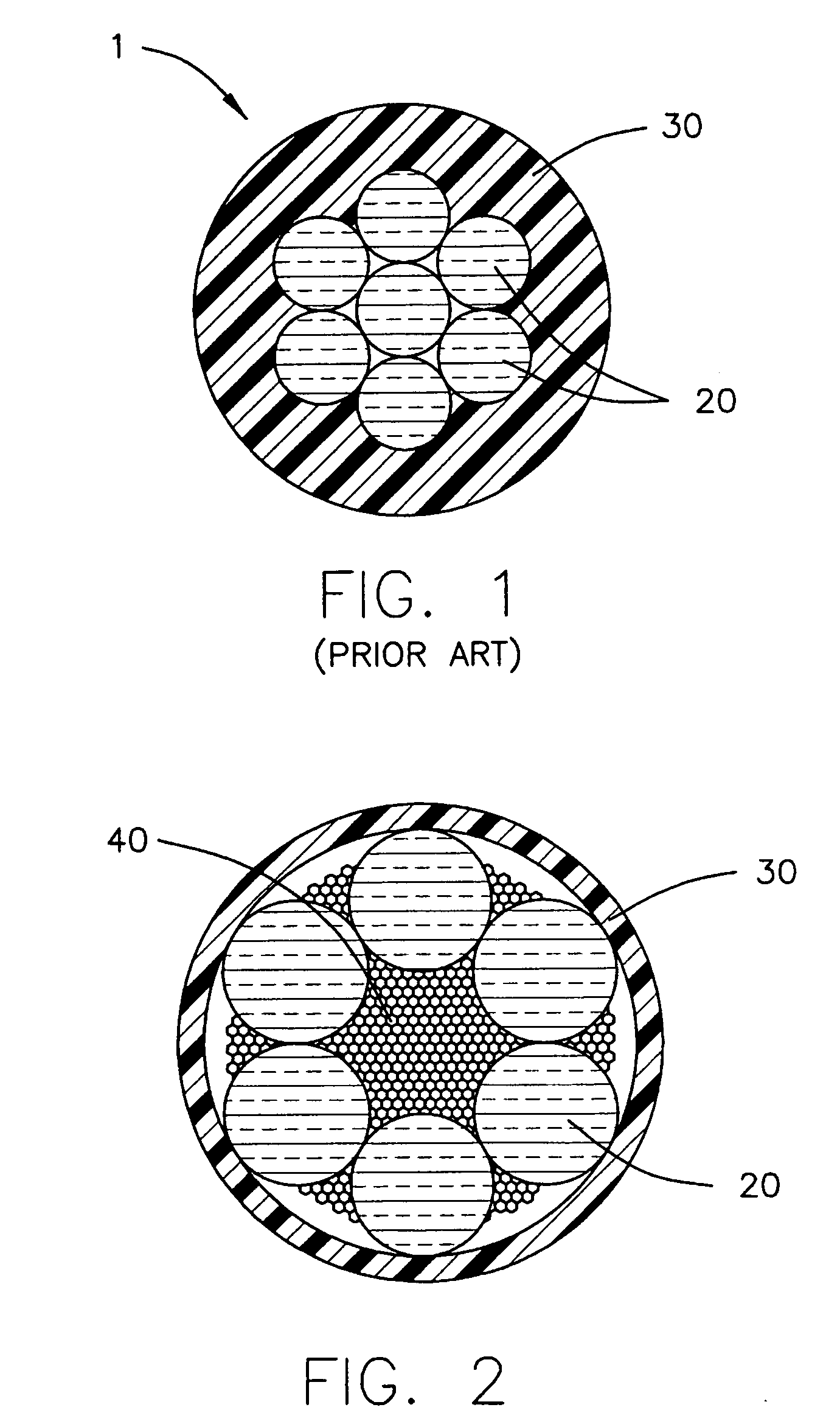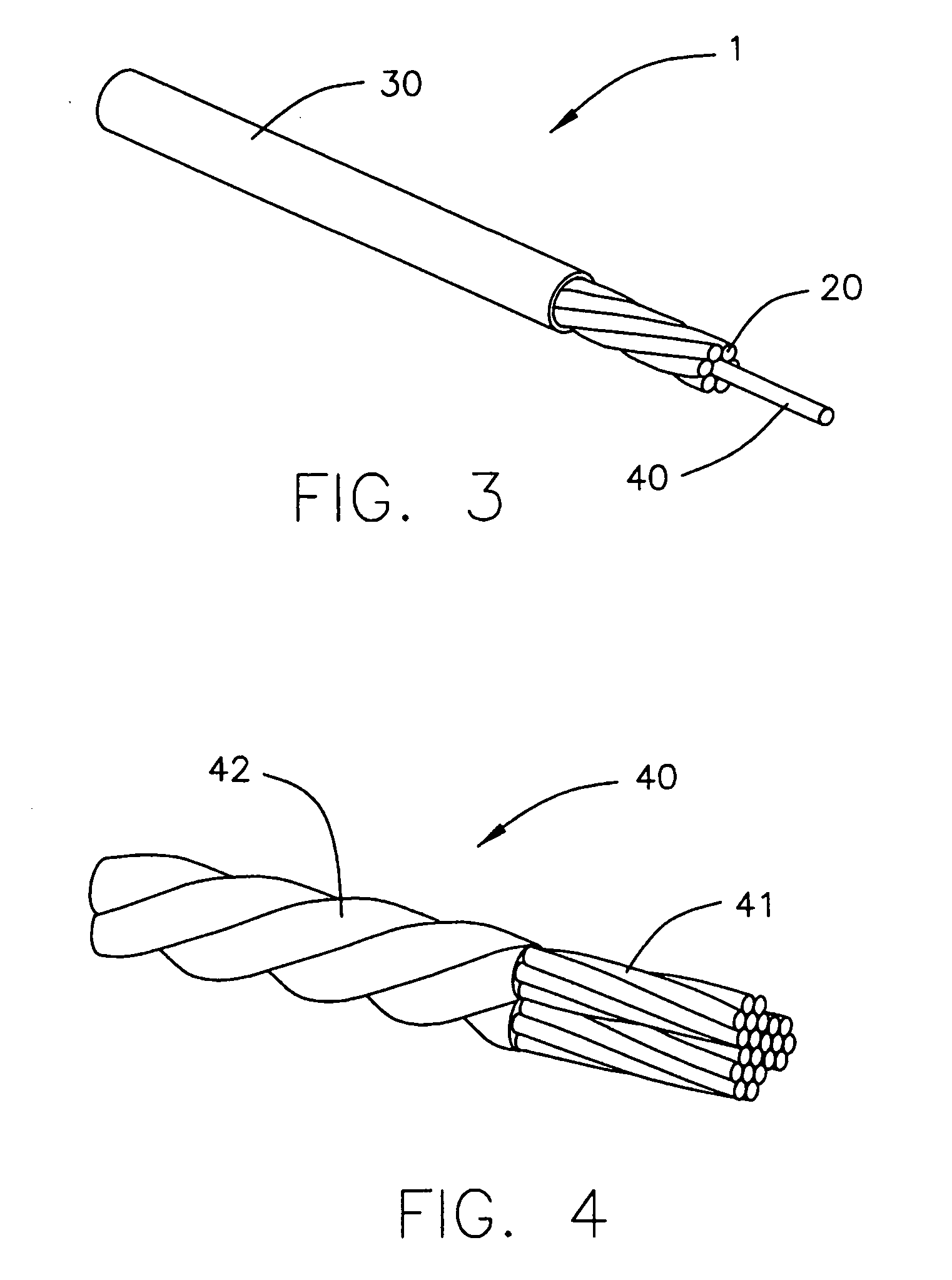Electrical control cable
a technology of electrical control cable and connector, which is applied in the direction of power cable, plastic/resin/waxes insulator, organic insulator, etc., can solve the problems of copper becoming ever more expensive, polymer filaments making up the core run the risk of escaping radially between two copper strands, and excessive copper use, etc., to achieve reliable crimping of connectors and as inexpensive as possible to fabricate
- Summary
- Abstract
- Description
- Claims
- Application Information
AI Technical Summary
Benefits of technology
Problems solved by technology
Method used
Image
Examples
Embodiment Construction
[0026]Like the prior art cable described in U.S. Pat. No. 7,145,082, the cable 1 of FIG. 3 comprises a plurality of strands 20 of conductive material, e.g. copper, extending in the longitudinal direction of a central core 40 of multifilament polymer, together with an outer sheath 30 of insulating material.
[0027]However, the number of strands 20 used is reduced since these strands are distributed uniformly and concentrically around said core 40, being in contact with one another in pairs and also with said core. In the non-limiting example shown, these strands 20 are six in number. For other sections of the core and of the strands, the total number of copper strands must naturally be adapted to surround the periphery of the core in a single layer.
[0028]The polymer filaments of the core 40, e.g. made of aramid, are secured to one another to constitute a non-metallic unitary structure, merely by means of an external adhesive coating. Such a step in the fabrication method is very easy t...
PUM
| Property | Measurement | Unit |
|---|---|---|
| Electrical conductor | aaaaa | aaaaa |
| Metallic bond | aaaaa | aaaaa |
Abstract
Description
Claims
Application Information
 Login to View More
Login to View More - R&D
- Intellectual Property
- Life Sciences
- Materials
- Tech Scout
- Unparalleled Data Quality
- Higher Quality Content
- 60% Fewer Hallucinations
Browse by: Latest US Patents, China's latest patents, Technical Efficacy Thesaurus, Application Domain, Technology Topic, Popular Technical Reports.
© 2025 PatSnap. All rights reserved.Legal|Privacy policy|Modern Slavery Act Transparency Statement|Sitemap|About US| Contact US: help@patsnap.com



